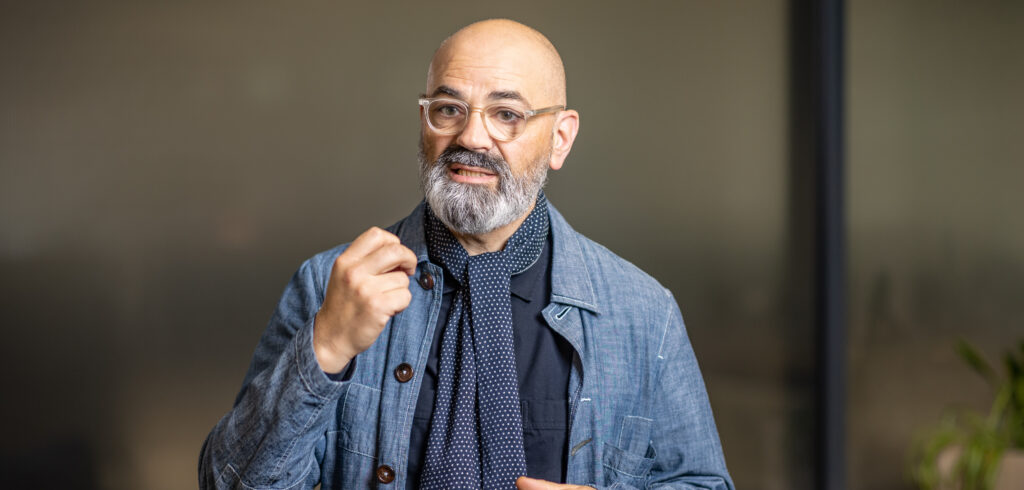Expectations have shifted as a consequence of Covid. However, many of the challenges faced by airports were already present before the pandemic, but they have been magnified. This presents airports with a unique opportunity and one that gives permission to be radical. The ‘do as before’ strategy is no longer an option; the pandemic has led to the death of precedent, where what has gone before is no longer necessarily a reliable guide.
Retail has always been, and will always be, about four things: (customer) recruitment, transaction, fulfillment and retention. But transaction and fulfillment are gradually shifting away from the physical store, which will increasingly focus on customer recruitment and retention. Therefore, the physical store will behave less like a distribution channel and more like a media platform to recruit and retain customers. This will greatly affect the customer experience, the service proposition, design of the space, its location within a masterplan of the terminal, the capex and opex and the revenue and rent models.
In essence, we will see a gradual shift of emphasis from ‘stores > shelves > sales’ to ‘stages > stories > shares’.
Physical stores in airports have the potential to be the most powerful media platforms available to a brand, where the opportunity is to monetize not only the experiences but also the data that these experiences generate. We must therefore plan to deliver data-responsive environments and experiences. The key challenge will be to capture the data that demonstrates the value of the physical space to a brand in generating media impressions, social media engagement and online sales. We refer to this as ‘media impact value’.
In my recent book, Future Ready Retail, I refer to the four pillars of ‘future readiness’ in retail. These apply as much to airports as they do to shopping centers and high streets.
Reinvent convenience
Convenience is at the heart of the expectations of consumers, who live increasingly transient and complex lives and demand experiences that are fast and seamless. Convenience is about simplicity, ease and ‘nowness’ – 63% of global consumers are willing to pay more for simpler brand experiences, according to research by Siegel+Gale. This trend has been magnified by the pandemic. So we must strip out complexity at all touchpoints of the passenger journey.
Reconnect to community
Airports have the opportunity to host brands that attract ‘communities of interest’. Focusing on experiences that drive participation, sociability and entertainment will engage passengers’ interests and passions and get them flocking back.
We must consider how to shift the emphasis from a functional ‘super-market’ model that passengers are finding increasingly boring to an inspiring experiential model that drives engagement, sharing and serendipity.
Reimagine place
It is no longer sufficient to tick the ‘sense of place’ box. We must shift from ‘theming’ to imbuing every touchpoint of the airport experience with an authentic ‘spirit of place’. It must run through the DNA of the airport, through its architecture, commercial offers, communications, tone of voice, the five senses of experience and, most critically, how passengers are served.
When considering the airport commercial offer specifically, this can no longer be seen just as channels of distribution but as moments of experience. We call this S.W.E.L.C.H – a data-driven curatorial approach that blends shopping, co-working, entertainment, learning, culture and hospitality.
Covid-19 has accelerated working from home. This represents a great opportunity for airports. As part of the commercial offer, they could develop a compelling co-working facility that activates the international departure lounge (IDL) and blends with F&B, retail, entertainment and physical and mental wellness. Passengers could arrive at the airport very early to work; if the facilities are world class, passengers may prefer this to working from home.
Reposition value
We need to rethink what value means to passengers beyond convenience and price. Post-Covid, consumers are seeking experiences that put wellness front and center. Wellness is no longer a category; it has to run through all aspects of the airport passenger experience. Covid-19 has also accelerated the demand for tranquil spaces. We must develop biophilia strategies to ensure that passengers are connected to nature in our airports; airport environments need to be softer and more ‘human’, more natural and more human in scale.
Value is also about truly authentic airport experiences. Here, localism is key. The challenge is to blend local and independent brands with national and international brands.
Consumers also value personalized experiences; in the future, DNA levels of personalization will be commonplace. Consumers also have an increasing thirst for learning and are happy to have these experiences in-store.
A recent Unibail-Rodamco-Westfield (URW) survey found that one-third of people are interested in attending lifestyle classes in-store.
Consumers are also turning their attention to brands and airports that prioritize environmental, social and governance (ESG). These are becoming priorities that drive preference.
Research by Accenture found that 40% of consumers have stopped using a brand due to the way it behaves.
Our mantra at Portland is ‘people and places not buildings and spaces’. This is really important to us as it gives us a brutal focus on what we refer to as the ‘transumer’, the traveling consumer and what is unique about their behavior and expectations.
In working with our airport clients, our aim is to help develop commercial strategies and designs that bring together a mix of experiences, both retail and non-retail, ephemeral and permanent, international and local. It is essential to have diverse occupiers and revenue models to build in flexibility in the design, masterplan and mix to allow airports to respond to rapidly changing passenger expectations and an increasingly disrupted consumer landscape.
For the airport commercial experience to be ‘future-ready’, it must speak like a magazine, change like a gallery, build loyalty like a club, connect like a community, share like an app, seed like an incubator and entertain like a show.
Serendipity is the most powerful consumer emotion that drives footfall, surprise, engagement, sharing and spend. Our aim is to help create ‘serendipity machines’!

